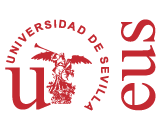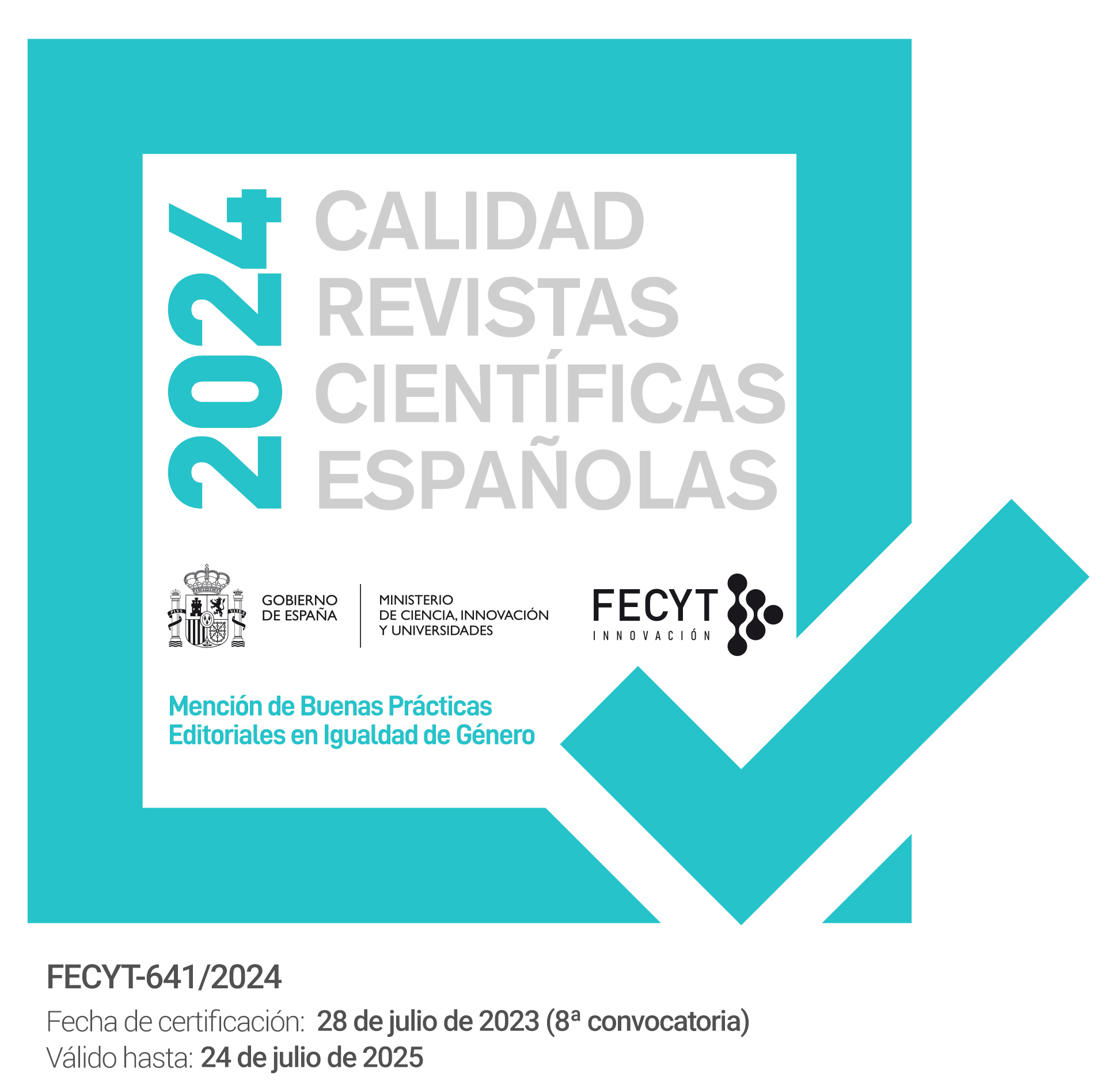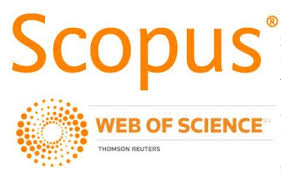ISSN: 1132-0265
e-ISSN: 2253-8321
DOI: http://dx.doi.org/10.12795/PH
Guidelines for authors
Observations on registration on the platform and submission of the article
All authors must be registered on the journal's platform before submitting an article.
- Registration process
The following steps must be followed (in the order indicated):
- Link or connect your ORCID identifier (alphanumeric, non-commercial code that uniquely identifies scientists and other academic authors). If you do not have such a digital identifier, you must create it and then link it (https://orcid.org/register).
- Create your profile on the platform: fill in the requested academic data form. Please note that the e-mail must be of an institutional nature (personal e-mails are not accepted).
- Activate your account.
IMPORTANT. In case the article is signed by more than one author, ALL of them must complete the registration process in the journal platform and link their ORCID, since each of them plays the role of "author".
Once registered, you can proceed with the submission.
- Submission Process
The submission process consists of the following steps:
- Access the control panel of your registry.
- Continue filling in your profile data (Identity, Contact, Tasks, Public, Password, Notifications). Pay special attention to the "Identity", "Tasks" (check the "author" option) and "Public" tabs and link your ORCID again.
- Proceed with the submission.
- Upload the document in editable format (Microsoft Word extension .doc) and in PDF, as well as other possible complementary files.
- Enter the basic metadata of the article (title, abstract, keywords, bibliographic references and source of funding).
- Confirm submission.
- Fill in, sign and send the form Responsible declaration of authorship, good practices and transfer of rights.
IMPORTANT. If the authorship of the article is shared, bear in mind that the author who assumes responsibility for uploading the article to the platform is responsible for filling in the tab "Enter metadata" (step b.) the data of the other co-authors as well -one file for each author- (called "collaborator" in the OJS platform), regardless of whether they have previously completed the mandatory registration process, as well as entering the links to ORCID of these collaborators, so that all of them are duly linked to the article in question.
- If you have any doubts when completing these processes, please consult the following instructions manual (PDF-Instructions manual).
Observations on the article
When submitting an article, the author must take into account that:
- The text meets the stylistic and bibliographic conditions included in this guideline. Otherwise, it will not be accepted.
- The article has not been previously published nor has it been submitted for consideration by any other journal.
- The PUBLICATION ETHICS AND BAD PRACTICES DECLARATION are specified in:
Ethical Commitment | Philologia Hispalensis (us.es)
3.1. If the participation of people as study subjects has been required, the author must send a PDF copy of an informed consent document endorsed not only by the signature of the participant but also by that of the researcher, by which he or she states his or her specific commitment to the conditions of participation and the specific consequences that may arise from it, provided that they are carried out for teaching, research and non-profit purposes.
This information will be explicitly stated on the last page, in the body of the text under the heading of "ETHICAL PRINCIPLE OF PARTICIPATION".
If this document is missing, the article will not be subjected to the double-blind peer-review process.
- The Editorial Policy on the Use of Artificial Intelligence are specified in here.
- The author's name and any possible reference that may reveal who the author of the article is has been removed from the text. When the text is sent to the peer evaluation section, follow the instructions included in Ensuring an Anonymous Evaluation.
- In "REFERENCES" section, whenever possible, URLs and DOIs are provided for references and access dates (please, check Crossref).
- When registering your data, you add your mailing address for future shipment of a copy of the publication.
- In the language of the article and in English, the first page will only include the ARTICLE TITLE(upper case bold), TITLE IN ENGLISH (upper case), Running head (italics) [abbreviated title for the header of alternate pages with a maximum length of 80 characters (including spaces)], Summary and Abstract (in small caps) [approx.150-180 words], and Keywords (in small rounded typeface) [5 words separated by commas].
They present the following structure:
ARTICLE TITLE [bold capital letters] (centred)
TITLE IN ENGLISH [capital letters] (centred)
Running head [italics]
Resumen [small caps]
Palabras clave [small rounded typeface]
Abstract [small caps]
Keywords [small rounded typeface]
- The structure of research articles (headings) should follow, as far as possible, the model detailed below: Introduction, Theory, Methodology, Results, Discussion, Conclusions and Bibliographic References.
- The content of the abstract and resumen must include the fundamental data of the research carried out, that is, it must follow the IMRD/C model.
- If the article is written by more than one author, the criterion chosen to decide the order of authorship and the specific contribution made by each of them to the work submitted must be stated. This information must be included at the end of the article, before the "REFERENCES" section, and should be headed by "AUTHOR CONTRIBUTIONS".
- Source of funding for the research that has resulted in the published work. The funding agency(ies) and the code(s) of the project(s) under which the research giving rise to the publication has been carried out should be indicated, where appropriate. This information must be referenced in the article by the authors, explicitly stated on the last page, in the body of the text under the heading of "FUNDING". Similarly, any other support received (administrative, technical, etc.) must be mentioned.
- Authors whose studies have been carried out with research data, including the variable sex, are recommended to report on whether the conclusions have taken into account possible differences between genders.
- We urge authors to deposit supplementary material, at least the research data underlying the publications, in institutional or thematic open access repositories federated in the European Open Science Cloud (EOSC), accompanied by its unique and persistent identifier.
- When submitting a review, the author must take into account that:
- The bibliographic reference of the book that is reviewed must include the number of pages, the collection and the ISBN.
For example:
Juan Antonio Chavarría Vargas/Virgilio Martínez Enamorado: From Ragua a Sacratif. Miscelánea de topónimos andalusíes al sur de Granada [italics]. Helsinki: Academia Scientiarum Fennica, 2009, 152 pp. ISBN: 978-84-7635-869-6.
- The name of the author of the review, as well as the Institution, the email address and the ORCID reference will appear at the end of it.
For example:
Name Surnames
Institution
username@email.com
ORCID
- The bibliographic reference of the book that is reviewed must include the number of pages, the collection and the ISBN.
- The text uses the Brill font since it has all the necessary characters for the transcription in Latin characters.
Instructions to download the Brill font: on the link The_Brill_Typeface_Package_v_4_0.zip download the four fonts.
Once downloaded, only copy or drag the .ttf files. from the source to the “Sources” folder of the computer [in: Control panel > Sources]. It is important to remember that you only have to transfer the files in .ttf format. [4 files: Roman, Italic, Bold, Bold Italic].
Note: The download is effective for both Windows and Mac, although the website outlines that in the case of Mac there may be problems downloading in certain browsers (especially Firefox). Please, open the Font Catalog app on your Mac device and copy the .ttf files. Take into account that your device may need to be restarted.
If installed correctly, Brill should appear in the font catalogue of the word processor.
- The maximum length of the article is 20 pages. The maximum length of reviews is 5 pages
- Currently, Philologia Hispalensis follows the rules for bibliographic references established by the American Psychological Association (APA) 2020 (7th edition), as it is among the most important academic standards for scientific knowledge. For more information, refer to the following link (References): Reference examples (apa.org)
Information about the editorial process
The editorial process for each submission includes the following stages:
- Verification by the Editorial Team that the articles comply with the style and content standards indicated in the guidelines for authors and in the ethical commitment document (1 month)
- Blind peer review process through the OJS platform (1-2 months)
- Editing and proofreading (2 month deadline)
- Layout process (PDF, HTML and XML-JATS format) (2-month deadline)
- Management of the publication of the issue in OJS (2-month deadline)
- Introduction of the abstract, keywords, bibliographic references and all metadata, both in Spanish and English
- File uploading
- Creation and publication of the journal issue in OJS
Beyond the above, the journal complies with the periodicity criteria and the articles received are published in December of the current year.







